The First Test Tube Baby at 40
On 25th July 1978, 40 years ago, the first baby conceived using in vitro fertilisation - IVF - techniques developed to help people who couldn’t have children naturally, was born. Her name was Louise Brown, and she owes her existence to the pioneering efforts of Cambridge embryologist Bob Edwards, research nurse Jean Purdy, and Manchester-based gynaecologist Patrick Steptoe. Together, this team laid the foundations of the techniques that are now used all over the world to help people to conceive, and we’re looking at the science of fertility treatment, telling their story and talking to some of the people whose lives they’ve transformed. Plus, we hear from Louise Brown herself...
In this episode

01:38 - Fertility worries: when should you get help?
Fertility worries: when should you get help?
with Dr Sarah Smith - Cambridgeshire GP
Most heterosexual couples will get pregnant naturally within a year. But for some, having a baby simply isn’t so straightforward. So at what point should you seek help, if you’re worried about your own fertility? Why do some people struggle to get pregnant, and what can be done? The first port of call is usually your doctor, and Katie Haylor spoke to Cambridge-based GP Sarah Smith, who explained how she approaches patients who are in this situation...
Sarah - If you’re under 35 years of age, we recommend people try for a baby for two years, and then if you’re over 35, we recommend trying for a year. And then, if nothing’s happening for a couple, do come along and see us and we’ll talk about it and see what can be done.
Katie - When you say “we’ll talk about it,” what kinds of questions might you ask?
Sarah - Sometimes just the lady comes. Sometimes the man might approach us and sometimes the couple comes. So we take a history from both of them and just find out what their lifestyle's like: if they’re leading a healthy lifestyle. We’d find out how long they’ve been trying for and then think about if there’s any past medical problems that might be affecting their fertility; so, for instance, somebody may have had an ovary removed or something, or a testicle removed. And then we’ll move on to perhaps examining them. For the ladies we’ll check their cervix is okay, make sure their menstrual cycle’s regular, and find if they’re having any problems with any heavy bleeding or pain.
Katie - Say someone’s on contraception, obviously they need to come off that in order to get pregnant but how long do they need to be off that contraception for?
Sarah - With the contraceptive pill you can be off it for just one or two months; and women can fall pregnant quite quickly. If you’re on the contraceptive injection it can take longer and we counsel women about that can take up to nine months for your fertility to return to normal after that. If an implant or a coil is removed, again, fertility returns to normal fairly quickly within one to three months.
Katie - So there are certain examinations that you might do on a woman. How about a man?
Sarah - A man as well, we’ll as them about their sperm and we can get them to do a sperm sample and look into the sperm counts, and we can look at the sperm under the microscope to see if they’re swimming well and healthy. If the sperm counts not quite right we can then arrange a repeat sample to see if we get an abnormal sample on two occasions. Actually, 40 percent of couples it’s the male and the female that have problems with their fertility.
Katie - Okay. So having a healthy lifestyle, I’m guessing, is advantageous to getting pregnant. Are there certain specific risk factors?
Sarah - Yeah. It’s a good idea not to smoke. We recommend not drinking any alcohol or keeping it to a minimum. And then cannabis and other recreational drugs, it’s best to avoid them. Because all of those things can affect your egg and sperm quality.
Katie - Okay. So this is for both parties?
Sarah - Yeah. And then the other things: a lot of people are leaving it a bit late in life now, particularly with women having careers, so as your age increases your fertility decreases. And nowadays we're having quite a big problem with obesity and we know that women who are overweight or obese can have more problems conceiving. And, similarly, if ladies are anorexic or too thin they can have problems conceiving as well.
Katie - How are we doing on a national scale?
Sarah - Overall, about one in seven couples will have fertility problems, and, as I said, four in ten couples there is a problem with a man and the woman. And, I guess, around ten to twelve percent of us will have some sort of infertility in Western Europe.
Katie - What does that look like in terms of the future? Do you think things are likely to change?
Sarah - I think we have to be sensible when we’re young. It’s best to have safe sex and to use condoms to prevent sexually transmitted infections because that’s another big thing. If you pick up things like chlamydia and gonorrhea, it can scar your tubes and cause fertility problems. So do practice safe sex and do think about your fertility because simple things like that can help us preserve our fertility for when we do want to start a family.
Katie - So a couple or someone comes to see you; you’ve had a conversation, you do some tests. If they need further help what does that look like? What do you do?
Sarah - The first thing we do is we check the lady’s hormones in the first three to five days of their menstrual cycle. We make sure their FSH and LH hormones are normal to stimulate a normal egg release each month, and then we can get them back about two thirds of the way through the cycle - around day 21 in a lady with a 28 day cycle to check their progesterone levels, to check if they’ve ovulated and produced that egg.
Then we can also send them for an ultrasound scan to check that they’ve got a womb, to check that they’ve got ovaries, and to make sure everything’s nice and normal. We do smear tests to check for any cervical cell problems on the cervix. And then for the man obviously we do the sperm samples.
So we do all of those tests to start with so that that’s ready for the fertility specialist if we need to refer them on. Then the fertility specialist can pick up on that and perhaps arrange further tests for the lady. There’s an X-ray test with dye you can have to check that the fallopian tubes are open. And there’s a little operation you can have with a camera through your belly button, and some blue dye, and they watch the blue dye coming up through the fallopian tubes and out spilling onto the ovaries to check that the tubes are open.
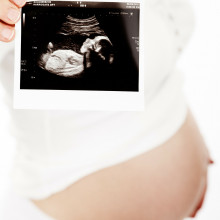
07:08 - How does a human develop?
How does a human develop?
with Professor Azim Surani, Cambridge University
Whether you can conceive naturally or get help from fertility specialists, hopefully the end result is a healthy baby, 40 weeks later. But how does a fertilised egg turn into a baby? Chris Smith went to see expert in human development at Cambridge University’s Gurdon Institute Azim Surani, who was doing his PhD with IVF pioneer Bob Edwards 40 years ago...
Azim - I remember the day when Louise Brown was born. I was actually on holiday in Cornwall, and I heard the news and I sent a telegram to Bob congratulating him.
Chris - No email in those days?
Azim - There was no email in those days so I had to send him a telegram.
Chris - Let’s go right back to the beginning of the life process which begins with sperms and eggs. So what is special about those two cell types that makes it possible for them to give rise to an embryo and then a foetus and a baby?
Azim - The egg and sperm only contain half the number of chromosomes, so they only have half the information for making a whole organism. And you need to fertilise an egg so that you have both sets of information from father and mother; that’s when the process of development can start.
Chris - How does the egg “know” it’s been fertilised?
Azim - Well, at fertilisation there are changes in the levels of some chemicals like calcium in the egg, and that actually starts the process of early development. That’s when the egg starts to divide and starts to develop further.
Chris - If you’ve got millions and millions of sperm competing to fertilise the egg, why is just one successful?
Azim - Yes, this is actually very important. Because what happens at fertilisation is as soon as one sperm enters the egg there are changes in the membrane of the egg which prevents further sperm from getting in. This is actually very important because you need exact numbers of chromosomes from each of the parents. If you have too many from the father then the process of development will go array.
Chris - So sperm gets into the egg, triggers this change in the membrane preventing any other sperm getting in. It then gives its genetic cargo to that egg so we’ve now got a cell with, hopefully, a complete assemblage of chromosomes - 23 pairs of chromosomes. Then what happens?
Azim - This is the point when the egg starts to divide, and it divides into two cells first. Then it continues to divide as it travels down the fallopian tube and enters the uterus, and, as it divides, the cells continue to multiply. They go through a number of divisions until the embryo reaches about 60 to 100 cells.
Chris - What’s special about that number?
Azim - Basically, there are two sets of cells: there are cells on the inside, which are called the inner cell mass cells which are going to give rise to the embryo, and then there’s the outer shell of cells which will give rise to the placenta.
Chris - So we’re at this stage where we have a ball of cells inside a ball of cells. The ball round the outside is going to be the bag that the baby develops in and the placenta that connects it to its mum. But how does that ball of cells in the middle turn into something we would recognise as a developing baby?
Azim - Well, one of the early things that happens is that the embryo starts to look like a sheet of cells, and at one end of the embryo you start to form a little structure called the “primitive streak.” Here the cells start to enter into the primitive streak and they go inside, and those cells are eventually going to give rise to the structures which we recognise as the internal organs eventually, and then it starts to be recognised as a developing foetus.
Chris - So cells are flowing in from the outside into the inside? It’s almost like inflating itself with more of its own cells and it creates that population of cells inside itself which they they're destined to become the internal organs and so on?
Azim - Yes. These cells, they start to become more specialised, as the embryo develops, becomes three dimensional, and it starts to be recognised as a foetus.
Chris - But then what happens next to actually turn this very primitive, very tiny, one millimeter structure into something which would resemble a baby?
Azim - The key aspect that occurs from then onwards are increasing numbers of cells and also increasing complexity of the developing internal organs.
Chris - By which time are all the major organs developed - things like the heart, brain, face, eyes? When are all the major things made and when are they present by?
Azim - The early stages of organogenesis are occuring between day 28 and 35 days of human development. This is when all the rudimentary organs are already formed, so all the basic structures start to get established by this time, and then thereafter there is tremendous growth of the embryo as development progresses.
Chris - Are we comfortable that the manipulations that are being done on sperms, eggs, and embryos to do things like IVF don’t have consequences for the health of that individual?
Azim - From all the experience we have had from all the IVF babies that have been born there is, at the present time, no clear evidence that there is an impact of IVF. Now we have to remember that Louise Brown is 40 years old, so it’s still quite early days. So I think it’s something that we should actually keep an eye on, to see if there are very long term consequences of IVF.
Chris - But at this stage we’re not aware of any?
Azim - There have been a number of experiments that have been done to test if there have been any effects of manipulation of the eggs and sperm in culture. But so far the majority of the evidence is that there’s no potential impact of manipulation of eggs and sperm in culture.
Chris - And last Azim, after you returned from your holiday having sent that telegram to your supervisor, Bob Edwards, what happened next?
Azim - I came back to Cambridge and we had a lot of celebrations. A lot of champagne was drunk I have to say.
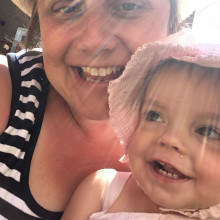
13:11 - Jessica: a long road to parenthood
Jessica: a long road to parenthood
with Jessica Hasketh-Boston, IVF patient
Jessica had a long, challenging road to parenthood, lasting over 10 years, including multiple rounds of IVF. Katie Haylor spoke to Jessica about her experience...
Jessica - Like probably many young women out there, I’d been on the pill, the contraceptive injections, for sort of ten years or so. When things don’t happen it’s like oh, it can take a little while to get out of your system. For a long while we were unsure if we were just missing the fertility window. We perhaps left it later than we should have done. In hindsight, that’s one of my biggest regrets.
By the time I went to the doctor we’d probably been trying for over three years, at which point they ran some tests and discovered that I had polycystic ovary syndrome. It is quite a blow when you discover that it’s you that are causing the fertility problems in your relationship.
Katie - Jessica had various drug treatments to encourage ovulation in order to assist in natural conception, but these weren’t successful.
Jessica - I strangely enough, fell pregnant naturally - we couldn’t believe it. Unfortunately, we did suffer a late miscarriage which was a really difficult time and we had to delay thinking any further for a while because we couldn’t understand why we could get pregnant to then lose the baby as late as we did, I suppose. That was a really challenging time for us both people and as a relationship.
We’re not ashamed to say we did get counselling and help at that time ready to go back and try again. On my third actual IVF treatment role we did get response. I was warned that because we were pushing my body really hard we’d probably have to freeze the embryos to give my body time to recover from the drugs used in the stimulation phase.
So we went to Australia for a few weeks to recover, so we then had one single embryo transferred after that. I did become pregnant but it suffered an early pregnancy loss. But we got straight back into it after having the two clear month cycles and we had two transferred after that, which I did become pregnant and we had a successful pregnancy with.
I joked, even when the contractions were every two minutes and I was trying to walk across the car park to get to the hospital, I still didn’t believe I was going to have a baby at the end of that. I was just like well, we’ll just have to see and so it was actually a massive shock when they said oh you know, you’ve got a little girl. They handed me this little girl and I just could not believe it had happened!
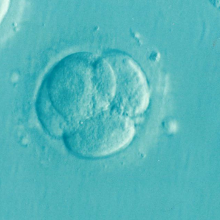
17:22 - The IVF process
The IVF process
with Adam Burnley, Bourn Hall Clinic Cambridge
What actually happens in the lab in a fertility clinic? Chris Smith met embryologist Adam Burnley at Bourn Hall, the clinic set up by Bob Edwards, Jean Purdy and Patrick Steptoe following their success creating Louise Brown. Adam explained the IVF process at the clinic; and for all cases, his first job is to assess fitness of the father’s sperm...
Adam - We’re looking for numbers of sperm, how well those sperm are moving, and the sort of abnormalities within the sperm.
Chris - I’m looking at the computer screen. That’s someone’s sample as seen down the microscope. Talk me through what’s on there.
Adam - What the software associated with this equipment does is identify the sperm heads. So anything of that size and shape it will track individually and it will work out how quickly that sperm is moving forwards, whether it’s moving at all, and will give us a precise number of sperm so that we can base our treatment recommendation on that, on the results.
Chris - How do you then make a judgement about the most effective way to treat that patient based on what you see here?
Adam - We take what the World Health Organisation call a normal sample parameters, so a certain number of sperm, the type of motility. And if the sperm parameters are above those, or what we would call a normal sample, we might just want to mix sperm with eggs and let the sperm fertilise those eggs on their own. If the parameters fall lower than those, we might decide that we need to inject sperm individually into eggs to enable those to fertilise and to create embryos.
Chris - What happens next?
Adam - We’ll go through to the lab and where the theatres are and I’ll try and explain what happens.
The female patient will need some preparation before they come in for an operation to harvest any eggs, and what that involves is stimulating the patient with fertility drugs which makes them hopefully produce more than the usual one egg per cycle.
Chris - And that happens in here? This looks a bit like an operating theatre.
Adam - We have an anaesthetic machine if necessary. A scanning machine so that when the surgeon’s doing the collection they can see the patients ovaries on a screen and therefore they can use a metal needle attached to a probe to suck out the eggs from each of the follicles. And depending on how many follicles that patient has grown in response to the fertility drugs, hopefully we should collect a corresponding number of eggs from those follicles.
Chris - How many eggs do you get from someone for each cycle like that?
Adam - The average number of eggs that we collect from patients is about ten, but some patients will get one egg collected, some patients will stimulate much more and get 30 or 40 eggs collected. And as the doctor is doing the egg collection we’ll let them know how many eggs they’re collecting. They’re put into a culture media which keeps them at the optimal conditions until we’re ready to do either IVF or the injection of sperm.
Chris - If you decide to go down the route of what they call ICSI (Intracytoplasmic Sperm Injection), which is why it gets called ICSI I’m guessing…
Adam - Yes.
Chris - ... where you are literally injecting a sperm into an egg. What happens then and where do you do that?
Adam - Do you want to come through here and I’ll show you where we perform that procedure.
What we’ll have to do before the ICSI procedure is to assess how many of the patient’s eggs are suitable for that procedure, and usually we find 80 percent will be. What we then do is, under a high power magnification, we have to select an individual sperm, immobilise that sperm by hitting it on the back of the neck with a needle, and we then inject that sperm into each of the suitable eggs. We hope that about 70 percent of those eggs that have that procedure will fertilise.
Chris - And hopefully, by that stage, the person has a reasonable prospect of getting a fertilised egg. What do you do then?
Adam - We’ll want to culture those and grow them for a few days until the embryo reaches the appropriate stage for us to select the most likely one that we think is going to implant.
Chris - So it takes about five days before you’re in a position to put the developing embryo back into the woman?
Adam - Yes, that’s right. The embryo when it gets to about day five become what we call a blastocyst, so its cells have different functions within the embryo, and the embryo needs to do that in order to implant.
Chris - This is one of the incubators: it’s got a series of drawers on the top I can see you’ve been putting some of the dishes, which have got the developing embryos, in. The amazing thing is there is a huge screen on here and we can see embryos developing. I can see cells dividing and you’re watching these things in almost real time.
Adam - Yeah, that’s right. This is relatively new technology in that in normal incubator conditions you would look at your embryos once a day; whereas this is taking a picture of the embryo every five minutes so we can review its development to see whether the embryo’s followed the right patterns of development.
Chris - This one’s just gone from 1 cell, to 2 cells, 4, now we’re at 8, 16, that’s amazing!
Adam - Yeah.
Chris - That’s a human developing?
Adam - Yeah. And to see it happen in that time lapse quick play is an amazing thing really. You can watch five days of development in two minutes.
Chris - I wouldn’t get any work done if I worked in this lab because I’d be stuck here watching this.
Adam - An amazing bit of technology really.
Chris - You would be able to tell from those pictures what one looks promising and what one’s not going to make the grade, can you?
Adam - On day five, we look at all the embryos, see which one has developed to the best stage, but then we can review the footage of that embryo developing and possibly deselect or select embryos to transfer based on that information.
Chris - This person here’s got quite a lot of embryos cooking. You’re going to be able to put how many back into that person and what do you do with the rest of them?
Adam - Okay. Well, the law allows us to put either one or two embryos back depending on their circumstances. If the patient then has other embryos which have reached the right stage we could possibly freeze surplus embryos, which means the person could come back if they’re not successful.
Chris - How do you get that back into the woman?
Adam - We have to pick the embryo up in a really tiny amount of culture media in what we call a transfer catheter, a sterile floppy plastic tube which is attached to a small syringe. Take it through to the surgeon who has the patient prepared for the transfer and he will feed the soft catheter through the cervix directly into the uterus, press the plunger on the syringe, and the embryo or embryos will be deposited in the uterus in the right place.
Chris - Does the lady have to lay there with her legs in the air for hours on end?
Adam - Not any more. It used to happen but not for a long time.
Chris - You used to do that?
Adam - Yeah. A patient would sit for three or four hours sometimes either in bed or with their legs up in the air. The fear being that the embryos would drop out.
Chris - Drop out?
Adam - Yeah. But a lot of studies have shown that it is absolutely not necessary. The embryo transfer procedure means you can walk down to theatre, have your transfer. The whole process takes about 15 minutes and then you can go home and resume your normal life and hope for the best.
Chris - And what’s the soonest you would know if it’s worked?
Adam - Really the earliest is about a day 18 home pregnancy test all the patients do.
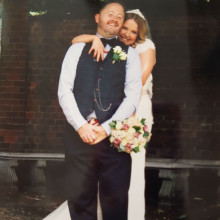
24:09 - Emma-Jayne: when IVF doesn't work
Emma-Jayne: when IVF doesn't work
with Emma-Jayne Watkins, IVF patient
Fertility science has come such a long way in the 40 years since IVF began to be used, but even so, overall only about 30% of treatment cycles are successful. Sadly, this means that at least 2 thirds of people don’t achieve the outcome they had hoped for. Katie Haylor spoke to Emma-Jayne...
Emma-Jayne - Me and my partner had been trying for about six years to have a baby and then we realised that something was definitely wrong. We decided to go to the doctors and have some tests done. They revealed that my husband had a very low sperm count and they wasn’t the right shape or form. Also, I found out later on that I had polycystic ovaries.
So the only way forward from there was IVF, which turned out to be ICSI. At first it was absolutely heartbreaking knowing that you can’t do something that you’re naturally meant to do as a female. But once we spoke to the doctors and the nurses and they reassured us. I mean they were fantastic. Of course, there’s an emotional side of it which was hard to deal with and is still hard to deal with. You never really get over it. You know, if was a good opportunity and we thought we would take it.
Katie - Tell me a bit about it. What did it involve?
Emma-Jayne - A lot of emotions. It’s a massive massive roller coaster: hormones, injections. It makes you a completely different person. One of the injections, one of my doctors said that it would make you feel like you’re in early menopause stages, which they were right - night sweats, hormonal swings, hair loss.
We then had the eggs taken and they then inseminate afterwards the eggs with the sperm. So they call you and they keep you updated on your eggs. There was nine eggs; one made it to blastocyst stage. They show you a picture of your embryo when you go back in on the day that they implant it. They show you on the screen and you can see it go in, which is amazing. Absolutely amazing, it’s like a little white light that goes in.
Then you have to wait two weeks to take a pregnancy test and it came back positive the first time. We were really really happy. But we had to wait about six weeks to go back into the clinic so they could do the first scan. They took me into the room, and I sat in the chair; you could see on the screen it was a little baby. The nurse’s face did kind of give it away a little bit that there was something wrong. It turned out that the amniotic fluid in the sac, there wasn’t enough of it and the heartbeat was very very low.
So they told me that it was probably not an ongoing pregnancy and just to prepare for the worst. So we did. My partner and I stuck together like glue. We were each other’s rocks and he was absolutely fantastic. After that I had the miscarriage and it took me a while to get over that. But we knew that we wanted to try again.
Katie - Emma-Jayne and her husband Malcolm had a second round of IVF along with a drug intended to reduce the risks of miscarriage. But, unfortunately, none of the resulting embryos became blastocysts…
Emma-Jayne - From the first time we were absolutely brokenhearted. The second time we kind of went in with a different look on it. We thought okay, if this doesn’t work this doesn’t work, but there are always other options like adoption, and egg donation and - that we didn’t really know of at the time. It did hurt, but we got through it a lot easier than the first time.
It’s a year on from the second try. We are looking to adopt at the moment, but we’re also keeping our options open for other treatments. It’s just the financial side of things that we can’t really afford it at the moment.
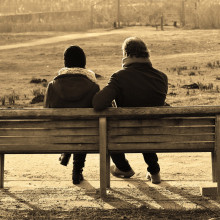
28:40 - Counselling and emotional support during fertility treatment
Counselling and emotional support during fertility treatment
with Jackie Stewart - independent counsellor, Bourn Hall
The process of fertility treatment is an emotional, financial and physical rollercoaster. Katie Haylor spoke to Jackie Stewart - an independent counsellor who supports patients going through IVF at Bourn Hall...
Jackie - I think it’s important to include any form of counselling for people’s psychological and emotional journey. So there are two types of counselling really: implications counselling is for anybody undergoing donor treatment or surrogacy, and then there’s support counselling or therapeutic counselling which involves supporting a person’s feelings through this journey.
Katie - Can you give me an idea of some of the emotional problems someone might experience having fertility treatment?
Jackie - Not everybody experiences what I’m going to tell you, especially if it works first time. Having said that, if they come back for more treatment and it doesn’t work they can start to experience some of the effects.
They may start to experience the effects of something that is likened to a grieving process because there is a feeling of a sense of loss. The further down the line that you get with treatments not working, the harder the impact, higher the anxiety, the stress levels will start to come up.
Katie - Of course, no-one has fertility treatment in isolation from the rest of their life. You’re still going on doing your day-to-day things. You might have a job, you might have caring responsibilities. Can the stress of fertility treatment trickle into other aspects of your life and how do you deal with that?
Jackie - It can be overwhelming; it affects every part of your life. The longer you’re in it, the harder it gets. Stress and infertility can’t be separated so it affects working capacity. Sometimes people keep it to themselves completely; they have little or no support. Other times, companies are very good and they do share it with family and friends but it’s a very individual thing. It’s hard to talk about because it’s a private matter and so just understanding and acknowledging people’s feelings can really help.
And often, men and women cope differently. I’m generalising, of course, but when you’ve got two different coping mechanisms in a partnership, that can sometimes isolate people from each other. So it’s helpful to come and talk to a councillor or talk to other people through a support group and to understand that your feelings are very normal. The point of counselling really is to support your feelings, help you to find ways through the treatment, help you to cope better so that you feel less overwhelmed.
So there are coping strategies, there are lots of websites and networks, books, support group. There are ways of helping a person to feel less alone with this and that’s the whole point really, and to feel reassured that there’s a way through it.
Katie - Can you tell me a bit more about implications counselling?
Jackie - For the majority of people there is a gap between having your own biological child and moving on to using donor gametes. They may need just a short space at least to consider the implications of that and what that means to them. How will the partner feel about that? When would they tell their child? How will they tell their child? How will they support their child if the child wants to find out more about the donor? All the legalities of that. There are so many implications.
Katie - Obviously, the best case scenario is to end up with a successful pregnancy and a healthy baby or multiple babies. That doesn’t happen for everyone. How do you come to terms with that?
Jackie - If you’re trying to decide to end treatment, that’s one of the hardest decisions you’ll ever make, so it’s really important that you reach out for some support. And it could be that you decide to move on to another form of parenting, which is absolutely wonderful and there’s lots of support there. But for those people that have been through this process, and maybe it’s been an arduous time for them, they need more support and lots of understanding.
This is a stressful situation that you’re going through so what I would say is to not be too hard on yourself and be compassionate to yourself. You are a patient, and what would you be saying to say a best friend if they were going through this? That it might have been a long held dream so to just give yourself permission to do or not do things, you know? There are people around you that actually are really waiting to help but they just don’t know how to, so if you can just be clear with what you might need from people and then communicate that.
For more information:
http://fertilitynetworkuk.org/for-those-trying-to-become-parents/information
https://www.bournhall.co.uk/news-events/fertility-support-group
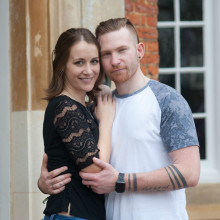
33:22 - Tanya: cancer and frozen embryos
Tanya: cancer and frozen embryos
with Tanya Hill, IVF patient
Some people seek IVF because they’ve struggled to conceive naturally. Others have the decision forced upon them by an unexpected situation that could otherwise rob them of their chance to have children later. Tanya is one of them. She and her partner Brendon now have embryos frozen, ready for when they decide to take the next step...
Tanya - I’d just turned 25, and the five days later I found out that I had leukemia. I remember breaking down in the living room. Brendon ran out to get my dad because he was working on the car on the drive and he brought my dad in, and my dad calmed me down enough for me to tell them. My dad rang my mum, and my mum came home from work. My brothers were involved. Like the whole family came to the hospital with me - it was incredible. They’ve been that supportive from day one, which has been amazing.
The chemotherapy didn’t work so my next step was to have a stem cell transplant. I was very lucky that my brother was a 100 percent match for a donor. Obviously, it’s horrible having cancer but everything seemed to just fit into place. It was all very very lucky and it went probably as well as it could have done. Then I managed to go back home, you know, regularly checked up at hospital. I was very unwell because before the transplant I had to have another round of chemo and full body radiation. Hence where the IVF comes in. Before you have full body radiation they kind of said, once you’ve had it that’s it.
I took the news of not being able to have my own kids worse than finding out I had cancer. Which is strange now I think about it because, obviously, there is things like IVF and you know you can adopt, and there’s other options out there. But when I found out I had the cancer it was you’re going to have to go through this, then you’ll be fine. When I was told about the kid thing, yes there are other options, but I’ll never be able to have my own biological children and that absolutely crushed me.
I think it was even worse because I think I found the one guy that wanted kids very very young. By that time, turning 25, I was ready. It was finding a job so that we had a stable income between us and then kids, that was my next step in, you know, life plan. So again, I think that’s why it hit so hard. It had been taken away before you’d even had a chance to try.
Addenbrooke’s hospital and Bourn Hall just worked so well together. They got everything done so quickly that it was possible for me to have the IVF done. Basically, a lot of people who have cancer who have treatments don’t have the time in between their chemotherapy to have IVF done. You need a certain amount of break off of chemotherapy. You can’t have any chemo while you’re having the IVF done. I’d finished my chemo and I had about maybe a three week break before I was going to have the radiotherapy done. And again, if they hadn’t worked so well together and got everything sorted so quickly it never would have been able to happen.
Yeah, now we have nine frozen embryos waiting for us!

37:19 - Bourn Hall: how IVF was developed
Bourn Hall: how IVF was developed
with Dr Kay Elder, Bourn Hall clinic Cambridge
Research scientist Kay Elder started working at Bourn Hall in the 1980s. Kay took Chris Smith through her collection of memorabilia documenting the story of how Bob Edwards, Jean Purdy and Patrick Steptoe made IVF happen...
Kay - “It’s a girl; here she is the lovely Louise. The first “test tube” baby is born and medical history is made as a mother’s dream comes true.”
Chris - We’ve got the original press cuttings when the Daily Mail, which is dated Wednesday July 26th, 1978 cost the princely sum of 8 pence!
In order to arrive at this day, with the birth of Louise Brown, where did the story begin and how long had they been working on this in order to achieve the birth of Louise?
Kay - The story began when Patrick and Bob Edwards met at a meeting at the Royal College in London on February 28th, 1968. Bob had had visions of what he wanted to achieve in terms of fertilising human eggs in-vitro and he needed the help of a clinician. Patrick immediately understood what the goal was and they decided to begin collaborating.
Chris - What was Patrick’s contribution then that caught Bob’s eye?
Kay - The development of what we now call keyhole surgery - laparoscopy - which is now commonly used in all different fields of medicine. But in the 1960’s, it was yet to be developed and Patrick heard about this technique that was being pioneered and he developed his own expertise by practicing in the postmortem room.
Chris - So he’s developing this technique to look inside tummies. What’s the relevance of that to fertility treatment and fertility research?
Kay - Patrick could see by looking inside tummies what the problem was. Some women had tubes that were blocked so that the egg could not pass into the womb. He could see abnormalities in the pelvis, he could see if there were bits of fibrous tissue adhesions.
Chris - Why was Bob interested in that?
Kay - Because he had spent many years working on looking at the development of eggs. They decided to start collaborating. Patrick was based up in Oldham near Manchester. Bob was based at his lab in the University of Cambridge. When Patrick was ready to do a laparoscopy, Bob and Jean would load up the car with microscopes, test tubes, culture medium, and drive up there. And when Patrick was able to recover eggs they put them into culture, looked at them under the microscope and watched to see if an embryo would develop eventually.
Chris - The patients who were undergoing this - what was then an experimental procedure - these were women who were hoping that they would have a baby through this sort of approach?
Kay - Definitely.
Chris - So they were willing to take part in these sorts of studies. So what did they then do in order to achieve in-vitro fertilisation?
Kay - They had to work out how to recover the eggs. They had to work out how to manage them, how to look after them, how to nurture them. What kind of culture conditions, the temperature, the gas. And once they were certain that the eggs appeared to be normal they started fertilising them.
Chris - But that’s still eight years before these headlines we have on these newspaper cuttings in front of us. So what happened over eight years? Why did it take so long from having embryos to having a baby?
Kay - Really everything that’s now taken for granted in IVF treatment they had to work out from scratch. Getting the hormones exactly right at the time that the eggs were collected and when the embryos were put back.
Chris - Looking at some of these other cuttings the reception wasn’t all positive though was it? Again, this is a Daily Mail editorial you’ve got here:
“Amid the rejoicing there are those who shiver involuntarily, where, they ask, is all this going to end?”
Kay - The teams themselves were an incredible set of extraordinary individuals. They were always very positive and very optimistic. They were quite certain that what they were doing was correct.
Chris - But you had people like James Watson. On the scientific stage, this guy has enormous credibility and he’s saying this is a bad idea?
Chris - You’d think then that having achieved this world first, things must have taken off! They must have then had people biting their arms off to do work. Is that what happened?
Kay - No. There was so much controversy and criticism that between 1978 and 1980 they had nowhere to continue working. And it took them two years to raise sufficient capital venture funding to open a private clinic because they eventually realised that this was their only option. They had hoped to have funding from the NHS, from the MRC, but the atmosphere in those days, thanks to people like James Watson and Max Perutz, was so negative, their only option was to open a private clinic.
Chris - And actually, that led to the purchasing of where we’re standing now, which in Bourn Hall. They bought that and moved in here in what, 1980?
Kay - September, 1980.
Chris - What were the other major developments along the way that have helped to keep Bourn Hall ahead and have helped to keep your success rate at what it is? Because it is one of the most successful clinics the country has.
Kay - Well, the first transition really started in 1984 when an expert ultrasonographer by the name of Jill Williams came over from California and started using ultrasound to measure the growth of the little follicles that contain the eggs.
Chris - This is physically looking inside the woman at the development of the egg that you’re going to harvest, or eggs you're going to harvest?
Kay - That’s right. Jill started by monitoring just by putting an ultrasound probe on the lady’s tummy and looking at the follicles, looking at the ovaries to see how they were doing.
And then the next thing that happened was a doctor by the name of Rajat Goswamy came in 1985 and started trying to recover eggs using ultrasound guidance instead of opening up for a big operation like laparoscopy. By 1986, we were using ultrasound guided egg collections, vaginal ultrasound, which is what everyone uses nowadays. So that was a major transition.
But another major transition was the discovery by two of our scientists here at Bourn Hall, Colin Howells and Mike Macnamee, that patients who had high levels of a particular hormone LH in their urine were less likely to get pregnant than those who had lower levels at specific times during the cycle, and this led to the use of drugs that would suppress the hormone cycle that elevates LH. That made it easier to programme and regulate when the eggs could be collected.
Chris - When did the atmosphere and the perception of the work that was being done here at Bourn Hall switch from one of being shivers going down people’s spines and scepticism to one of positive reception?
Kay - That really took quite some time. I think things started to shift when Dame Mary Warnock led a committee to look into the ethics of IVF. In fact, I think we were probably the first clinic in the world who had our own ethical committee.
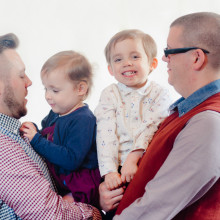
44:51 - Gary and Matt - dads through IVF
Gary and Matt - dads through IVF
with Gary and Matt Unwin-Riches
People have IVF for a variety of different reasons - one of course being fertility problems. But Gary and Matt have a different story. They are now dads, thanks to IVF treatment...
Gary - I’m Gary.
Elliot - I’m Elliot.
Matt - I’m Matt.
Verity - I’m Verity!
Gary - Matt and I went for an adoption meeting, which we decided shortly afterwards was not a route that we wanted to go down. A couple of months later we told our families that we’d done that and were sort of thinking about starting a family, but were back to square one really.
And then a few weeks later my amazing sister-in-law sent me a message and said if we wanted to go down the surrogacy route, she would be honoured if she would be able to carry, or try to carry, the baby. It’s an amazing thing to do and we will never be able to thank her enough.
Logistically it’s a very long process. There’s a lot of red tape: forms to fill out, committees to go through, tests to have, decisions to make. But it’s all worth it in the end isn’t it? The most incredible bit was when they actually put the eggs in and I was allowed to be there for that. On the screen is these two little dots went in, and that’s Elliot and Verity.
Katie - Who is the biological father? Matt, this is you?
Matt - Although there’s no blood connection, Oli was Gary’s sister-in-law. The clinic and us felt that it didn’t blur the lines if I was the biological father.
Gary - And also personal medical history it was easier on both counts for Matt to be the father genetically. Yes, it was a tough decision and I thought it would bother me but it really doesn’t. And I just remember being in the bathroom cleaning my teeth when the text message came through to say that she’d done the pregnancy test and she was pregnant, you and I just bursting into tears, sitting down on the floor and just couldn’t quite take it all in. I think we were both late for work that day.
Katie - What about the eggs?
Matt - The clinic found us an egg donor who’d obviously been through the whole screening process. The clinic give you information yes, about their history: medical and a bit about their personality, their working life, and their situation. Even their physical attributes just so you get a picture.
You just go through so many different emotions during the process: excitement, anticipation, fear. Ultimately, you know it’s our dream come true. I think we never really wanted to believe it was happening until the actual moment that they were here.
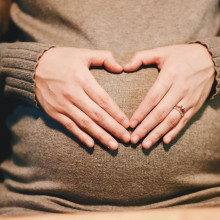
47:45 - Fertility reflections
Fertility reflections
with Sarah Smith, GP
Katie Haylor asked GP Sarah Smith what advice she would give to people thinking about thier fertility...
Sarah- I think once you’re over the age of 25 your fertility does start to decline, and once you’re over 35 it declines even more quickly, so I think don’t leave it too late. Do if you’re having problems come along and see us and talk about it. We can refer you. You can have tests done. I did read one statistic of ladies who are married over the age of 40, 4 in 10 will get pregnant but 6 out of 10 can have problems, so leave it too late and do think about all your options. Stay safe, have safe sex, and just a healthy lifestyle to maximise your fertility.
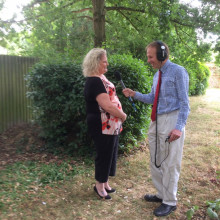
48:32 - Louise Brown: the world's first IVF baby
Louise Brown: the world's first IVF baby
with Louise Brown - the world's first IVF baby
On 25th July, 1978, Louise Brown was born. Chris Smith met up with Louise in Grantchester, Cambridge, to find out what's it like to be the world's first IVF baby...
Louise - Louise Brown, and I’m the world’s first IVF baby.
I was four years old, just before I started school, and mum and dad thought it would be best to just say that I was a little bit different to everybody else - the way I was born and conceived. Because children can be quite cruel sometimes and they just wanted it to be so that I was aware that I knew if anybody said anything that I knew about it. I didn’t fully understand it but they showed me the video of my birth and said that was how I was born, slightly different, and they sort of left it there. And I picked up the rest of it listening to mum and dad being interviewed. If I have any questions for mum and dad I could ask them and they’d explain it to me.
Chris - Do you get a lot of attention?
Louise - On special occasions, yes. Whenever my birthday has a nought or five on the end of it people seem to get excited, so I’m semi-used to it.
Chris - When did it sort of dawn on you how special the process that resulted in you was?
Louise - I think I must have been between 12 and 14. It was mainly coming to events here at Bourn that brought it home. When you see all the children and people used to say yes Louise, and you’re the very first, and also the press wanted to take pictures or interviews. None of my friends did that.
Chris - I wondered when you said about 14 because that would coincide with sex education at school and that kind of thing. I wondered if that was what began to hone it down in your mind?
Louise - Yeah, definitely. Because I can remember we had, when I was in senior school, I went into the science lab and opened the science book and there was a big picture of me in there. And the teacher said yes Louise, you’re in this book and I was all embarrassed surrounded by test tubes and bunsen burners and things like that, so yes. My son’s 11 and he is aware now of the difference, the way I was born to the way he was born.
Chris - Are you an only child?
Louise - No. My mum went on four years later to have my sister Natalie. She was born in 1982 and she was the world’s 40th.
Chris - 40th test tube baby?
Louise - Yes, yes.
Chris - Do you like that phrase “test tube” baby because it doesn’t really involve a test tube does it?
Louise - I prefer IVF now. Everybody says IVF and I prefer that.
Chris - Now when you came to have your own kids did it cross your mind at all or even before you had them, you were born in a slightly special way, might there be consequences for your own fertility? Did that cross your mind?
Louise - I was always asked as I got older growing up would I consider IVF, and, obviously, yes I would, but I never actually thought I would need to. And this is the problem, you don’t think about it when you’re younger. And then, once I got married two years later, we had Cameron so I didn’t sort of think about it. I just assumed, like most people do, that you’ve got no problems.
Chris - And he came along naturally?
Louise - Yes.
Chris - Do you get asked by people about whether or not you’re healthy? Because one of the worries that was expressed, even James Watson DNA pioneer, was suggesting things like we are playing God. We are potentially damaging the genetic integrity of the human race. Do you ever get asked that sort of thing?
Louise - People do ask if I’ve had tests. I know I had a lot of tests when I was first born, but that’s it, I haven’t had anything since the day I was born.
Chris - And otherwise you’re pretty hale and healthy?
Louise - Yeah, absolutely fine. I don’t have any problems. Conceived naturally. Yeah, I’m fine.
Chris - What was the reaction of your parents to your arrival?
Louise - I don’t think mum got to see me until the 26th July because it was a C section, so she was knocked out. I think my dad, as I recall seeing on a video, I think he was shaking and had to give me back to the nurses because he was like... I don’t think he could quite believe it.
Chris - When you come back to Bourn Hall now, because obviously the people who made yourself - a bit of a strange concept that isn’t it, then set up Bourn Hall and have now helped tens of thousands of people since, what’s it like you come back?
Louise - It’s almost like my second home. I love spending time with the people here. It’s beautiful grounds and I’ve also got really good memories of all four people that are unfortunately no longer with us there. So I love coming back.
Chris - One of the staff at Bourn Hall said to me it’s quite unusual because when people come to have embryos put back they often bring their mum and it’s not normal that your mums present at your conception.
Louise - No, it’s a bit weird. My mum wasn’t present as my son’s conception…
Chris - Any parting message for anyone?
Louise - Yes. If you’re an IVF child then, we rock! And if you’re thinking of having IVF go for it. Mum believed it would work and there are now nearer I think 8 million of us. So yeah, go for it.










Comments
Add a comment